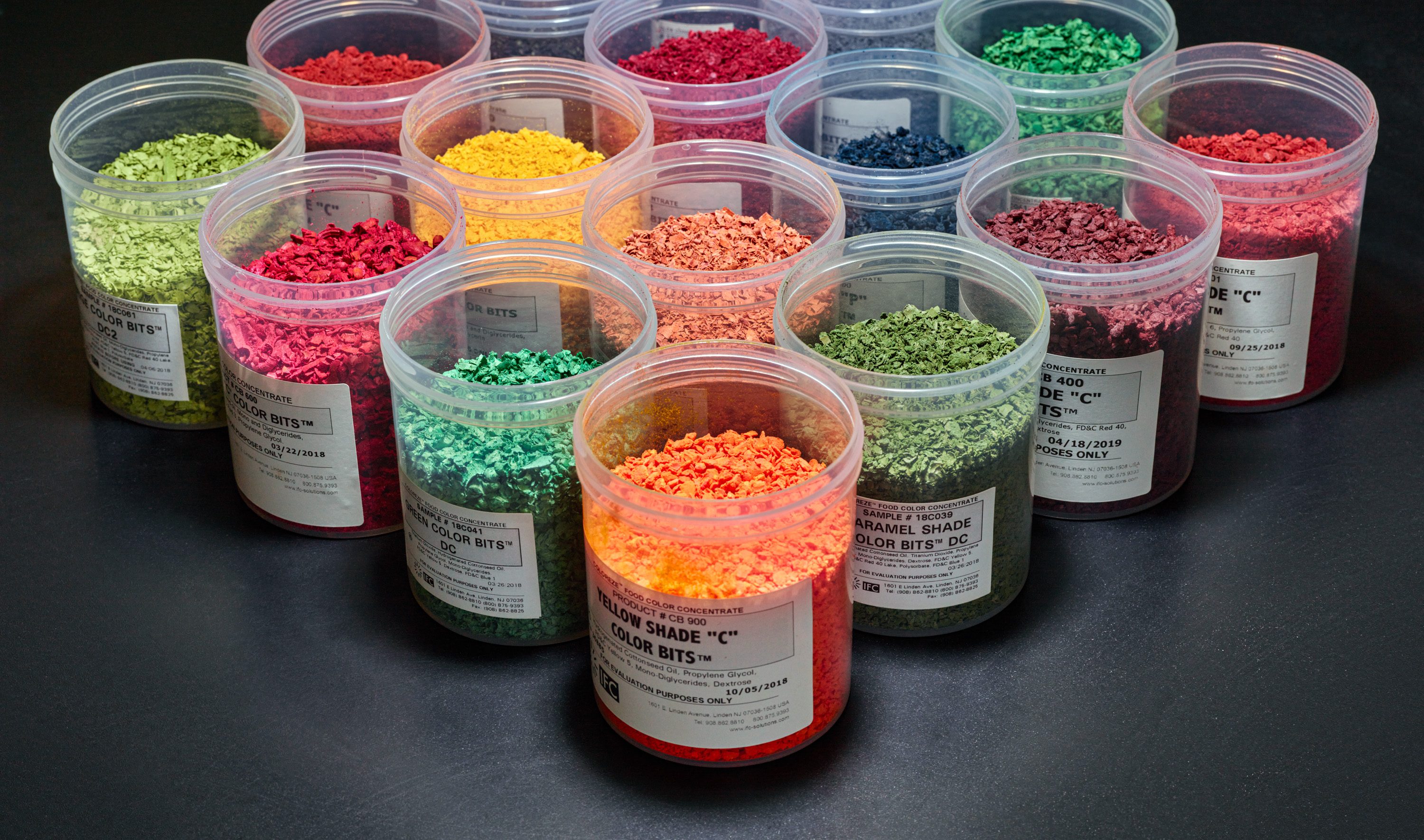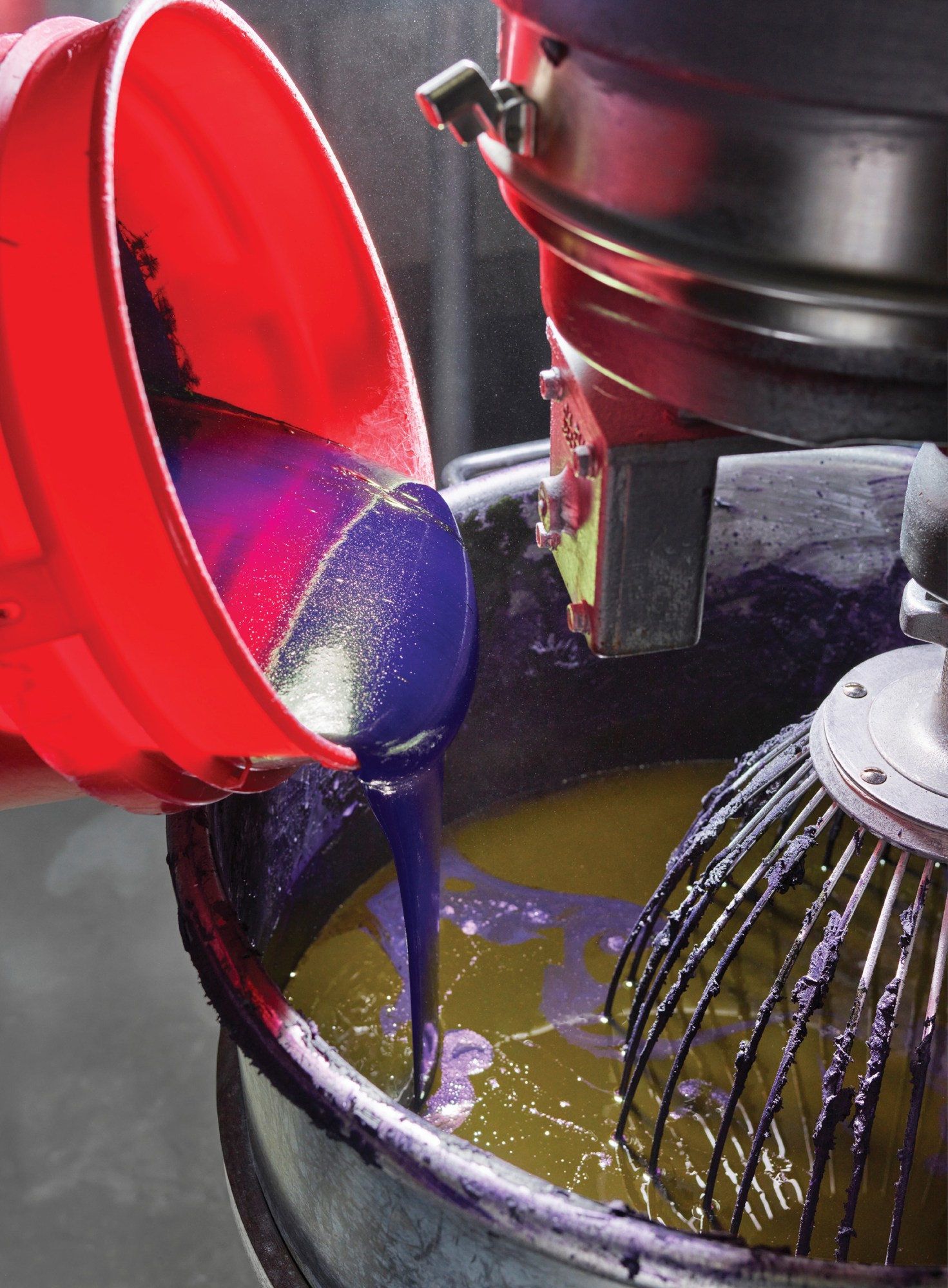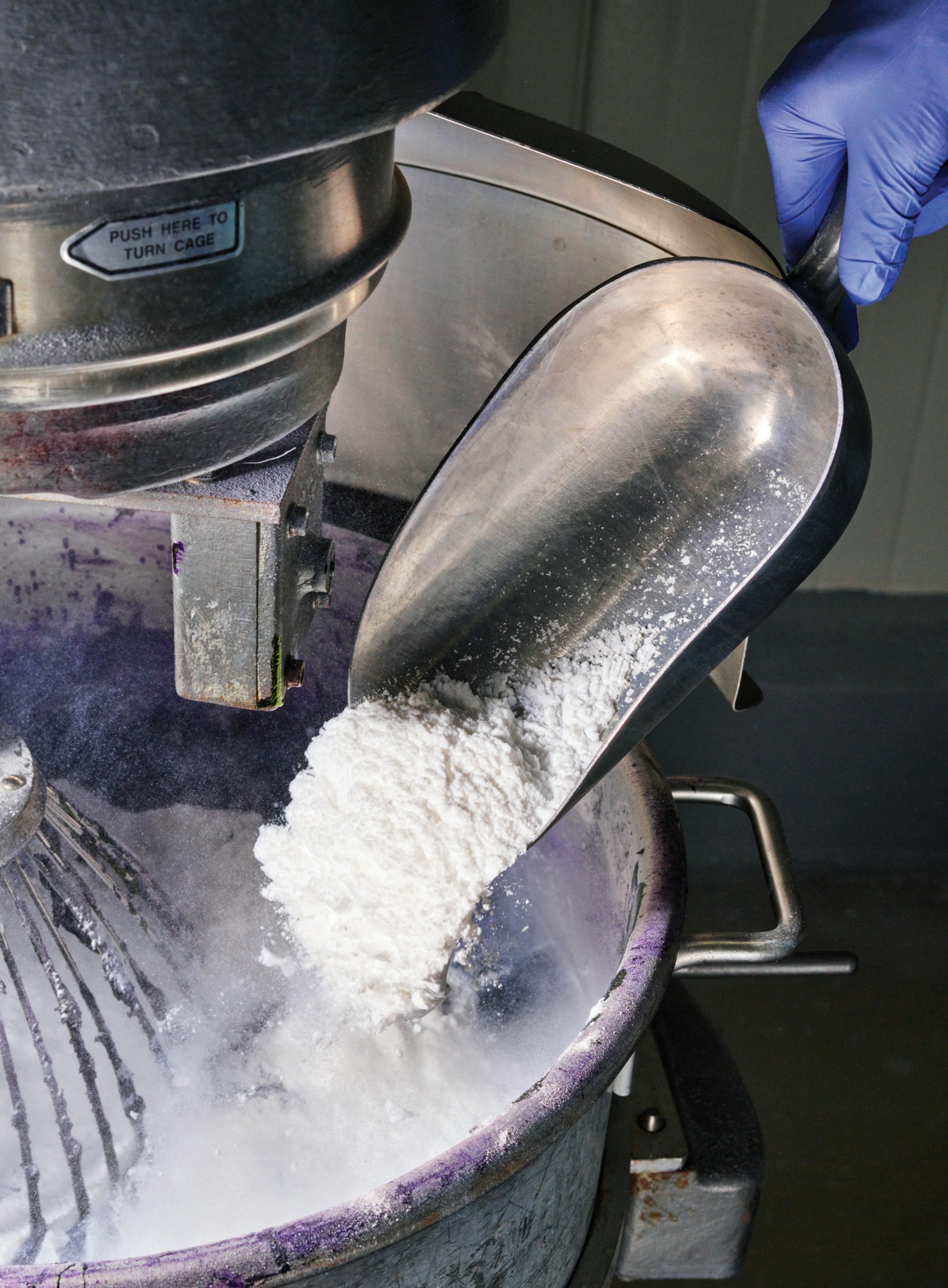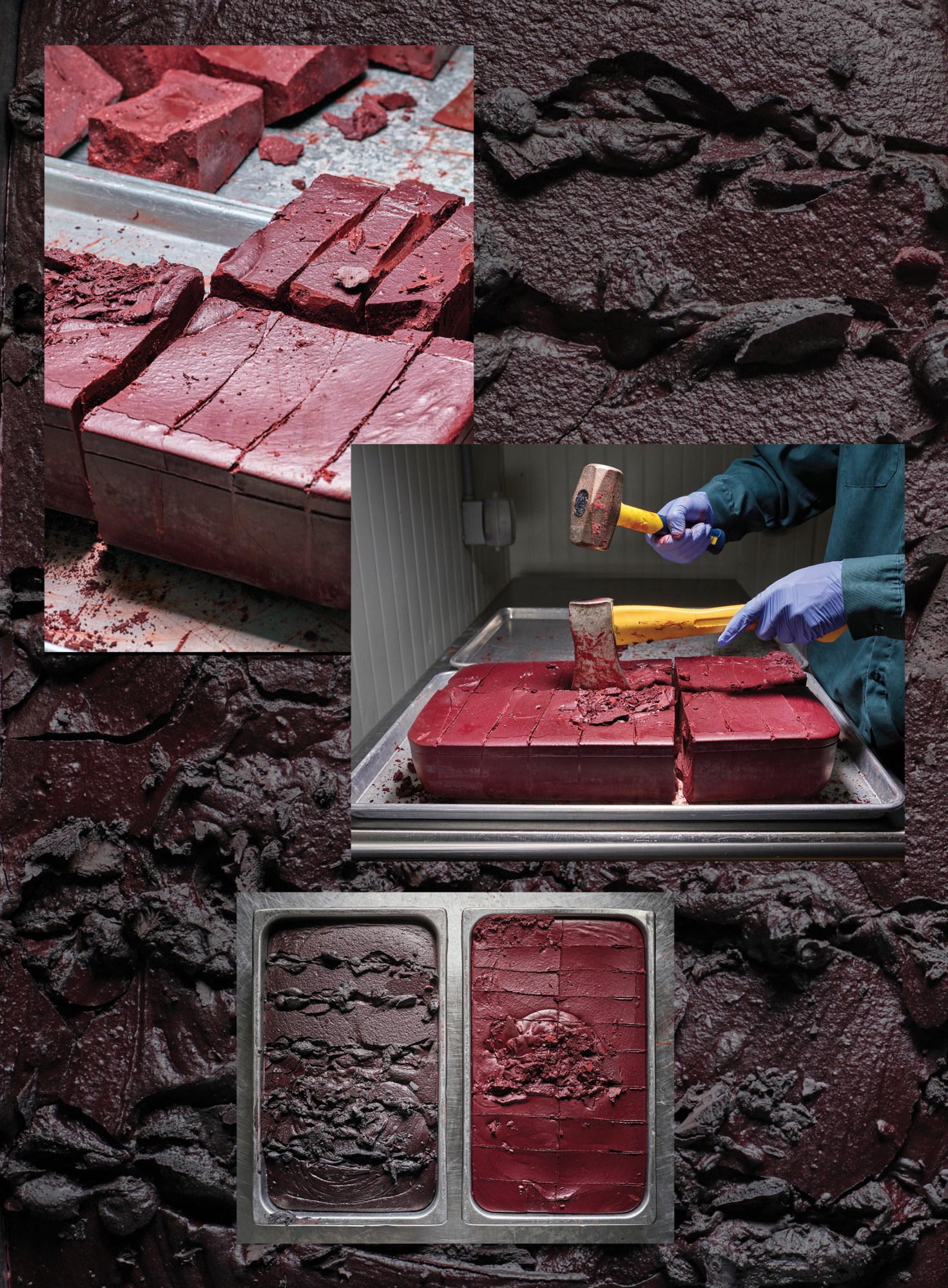In pictures: the factory where candy gets its colors
Plants like the one run by IFC Solutions in Linden, New Jersey make the pigments that color the food we eat.

IFC Solutions in Linden, New Jersey, makes both natural and artificial food coloring in “almost any desired shade,” according to the company. This variety of colors would have been tough to imagine in the mid-19th century, when the first artificial food color (purple) was produced from coal by-products. These “Color Bits” are prized by candy manufacturers because they are easy to mix into hot masses of candy but are low in moisture, which makes for a long shelf life.
Color Bits are made by oversaturating liquid colorants (left, ) and then adding a thickening agent, like corn sugar (right).


Scarlet Shade Red C (left tray) and Striping Red C (right tray) both get much brighter once diluted. If you've eaten a candy cane in the US, the red stripe is likely to have come from a tray like the one to the right. Both are proprietary blends based on Red 40, a synthetic dye also known as Allura Red. Once the resulting cake dries, it is chopped into bits.


Deep Dive
Humans and technology
Building a more reliable supply chain
Rapidly advancing technologies are building the modern supply chain, making transparent, collaborative, and data-driven systems a reality.
Building a data-driven health-care ecosystem
Harnessing data to improve the equity, affordability, and quality of the health care system.
Let’s not make the same mistakes with AI that we made with social media
Social media’s unregulated evolution over the past decade holds a lot of lessons that apply directly to AI companies and technologies.
Stay connected
Get the latest updates from
MIT Technology Review
Discover special offers, top stories, upcoming events, and more.